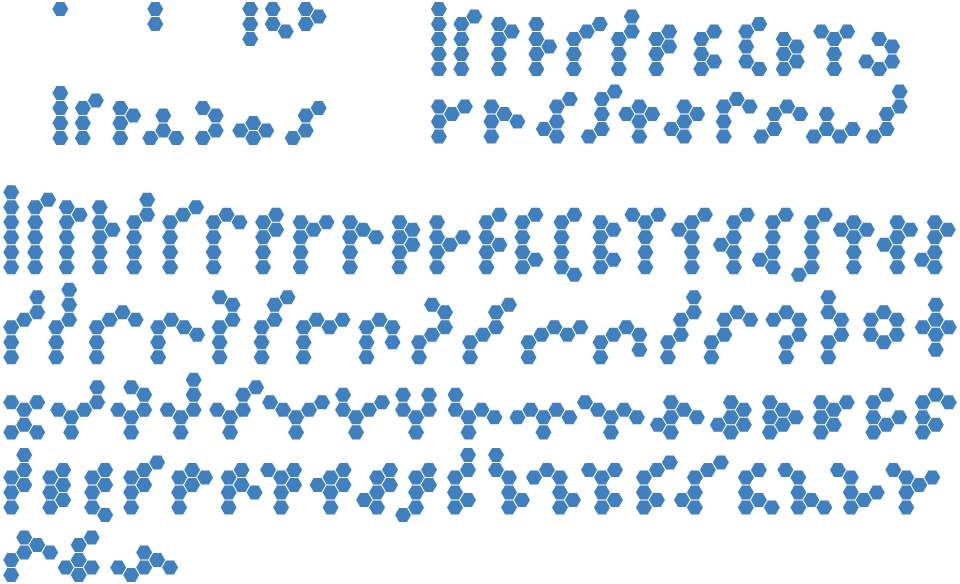A polyhex is a plane figure composed of n regular hexagons joined at their edges, in the manner of a regular hexagonal tessellation.
Polyhexes have perhaps achieved their greatest utility in organic chemistry, where they can be used to represent various configurations of aromatic hydrocarbons, but are also often employed in puzzles, logic games, and other recreational mathematical pursuits. A more speculative application of the first several orders of free polyhexes can be found in Patrick Mulcahy's article The Hexagonal Geometry of the Tree of Life, available as a PDF file in our Hexagonal Library.
In the image above we see the first six orders of free polyhexes, with rotations and reflections not counted as separate forms. Polyhexes can also be enumerated as one-sided, where reflections but not rotations are counted as distinct forms, and as fixed, where both rotations and reflections are counted distinctly. A table of all three enumerations can be found below.
| Free | One-sided | Fixed | |
|---|---|---|---|
| 1 | 1 | 1 | 1 |
| 2 | 1 | 1 | 3 |
| 3 | 3 | 3 | 11 |
| 4 | 7 | 10 | 44 |
| 5 | 22 | 33 | 186 |
| 6 | 82 | 147 | 814 |
| 7 | 333 | 620 | 3652 |
| 8 | 1448 | 2821 | 16689 |
| 9 | 6572 | 12942 | 77359 |
| 10 | 30490 | 60639 | 362671 |
| 11 | 143552 | 286190 | 1716033 |
| 12 | 683101 | 1364621 | 8182213 |
| 13 | 3274826 | 6545430 | 39267086 |
| 14 | 15796897 | 31586358 | 189492795 |
| 15 | 76581875 | 153143956 | 918837374 |
| 16 | 372868101 | 745700845 | 4474080844 |
| 17 | 1822236628 | 3644379397 | 21866153748 |
| 18 | 8934910362 | 17869651166 | 107217298977 |
| 19 | 43939164263 | 87877879487 | 527266673134 |
| 20 | 216651036012 | 433301253231 | 2599804551168 |
 Polyhexes
Polyhexes